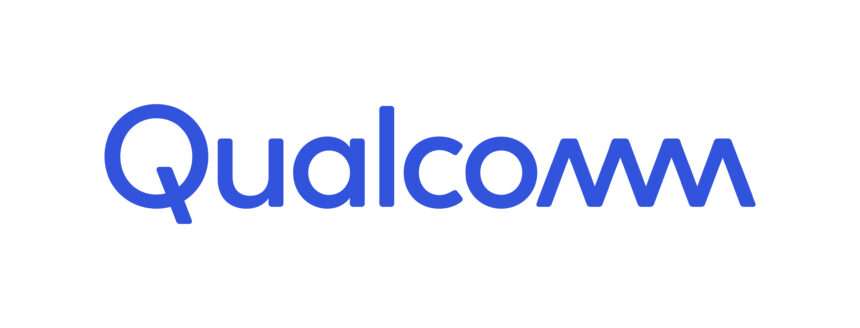I think no one uses smartphones haven’t heard about the mobile processor named “Snapdragon“. But have you ever thought about its manufacturing company? Who manufactures these processors? Not only about the processor but also other products like next-generation Wi-Fi technology (Wi-Fi 7 as of 2024) and a bunch of other electronics products.
Whether you’re building a mobile phone or laptop, VR device, robot or Wi-Fi routers, ‘Qualcomm Technologies’ help you build your next product and get it to launch efficiently and safely. Yeah, I am talking about Qualcomm Inc.,
Qualcomm is an American multinational company and a leading provider of Telecom equipment’s and semiconductors all around the globe that designs and develops wireless telecommunication products and services. Over the years, Qualcomm has expanded its selling semiconductor products for wide variety of IoT devices like laptops, wi-fi, watches, smartphones, watches, and other devices employing around 50,000 people as of 2024.
This article provides you with the very details about the company and its features, products and services form with 100% research based information.
History Of Qualcomm
Qualcomm was established in 1985 by Irwin Jacobs and seven other co-founders (Andrew Viterbi, Franklin Antonio, Adelia Coffman, Andrew Cohen, Klein Gilhousen, and Harvey White) led by Irwin himself. The company was started as a contract research and development center specially for government and defense projects. The name of the company Qualcomm was “Quality Communications“.
Qualcomm grew from eight employees in 1986 to 620 employees in 1991, due to demand for Omnitracs (world’s first satellite-based mobile communications system). Qualcomm merged with Omninet in 1988 and raised $3.5 million in funding to produce the Omnitracs satellite communications system for trucking companies. By 1989, Qualcomm had $32 million in revenue, 50 percent of which was from an Omnitracs contract with Schneider National.
Through the profit of the business, the company started funding code-division multiple access (CDMA) wireless communication technologies for research, development and design of cell phone networks. As the time passed and new technologies and cell phones were on the verge of rise, Qualcomm developed a more advanced set of satellites phones and 2G devices also.
In 2000, Qualcomm entered the Chinese market through a partnership with China Unicom which launched the first CDMA-based network in China in the year 2003. Since then, China became a major market for Qualcomm’s semiconductor products, representing more than fifty percent of its revenues, but at the same time became source of many legal disputes regarding Qualcomm’s intellectual property.
Business Analysis:
Qualcomm’s QCT (Qualcomm CDMA Technologies) business segments designs and provides software and other technologies that are used in smartphones and other devices is not only the lone company manufacturing these products. There are many competitors with which this section i.e. QCT has to directly compete with.
Other companies including Apple, Huawei, HTC, Nokia, and Samsung in mobile phone technology and also MediaTek and Samsung in the semiconductor market. Since Qualcomm is also involved in manufacturing chipsets for other electronic devices and peripherals too, so it is also directly competing against AMD, Intel, and Nvidia.
Related: Apple in Talks with Google for Gemini AI: A Game-Changer for iPhones
In April 9, 1999, Qualcomm Incorporated was named to the prestigious FORTUNE 500 list which highlights the growth of the company and since then the company keeps consistency in the list and continues to increase its rank on the list.
Qualcomm came in the 107th spot on Fortune’s list of top 500 companies in 2022 which is seventeen spots higher from the previous year. The company had the market capital of around $191.0 billion and achieved a revenue of $35.8 billion as of 2023 which was declined by 19% as compared to the year 2022.
As per quarterly report of 2022, The Vanguard Group holds the most significant stake in QCOM shares, surpassing 105.5 million shares, equating to approximately 9.5% ownership of the company. This holding, valued at over $15.5 billion, is spread across a range of Vanguard’s mutual funds and ETFs.
As of 2024, Qualcomm has a net worth of $187.12 billion. The company generated a net revenue of $9.92 billion in the first quarter of 2024. As per the financial report, there was a 24% increase in net income to $2.77 billion, or $2.48 per share, up from $2.24 billion, or $1.98 per share, compared to the same period last year.

Qualcomm generates its main revenue from three of its main business segments:
- Qualcomm CDMA technologies: QCT (Qualcomm CDMA Technologies) creates and distributes integrated circuits and system software based on 3G/4G/5G and other technologies for use in mobile devices, wireless networks, internet of things (IoT) devices, broadband gateway equipment, consumer electronic devices, and automotive systems for telematics and infotainment.
- Qualcomm Technology Licensing (QTL): It is a company’s patent licensing side of the business.
- Qualcomm Strategic Initiatives (QSI): The side of the company that makes strategic investments.
Marketing/Business Strategy
Consumers’ conscience is satisfied according to their needs and desires, so they choose the product from which they get maximum value and satisfaction. Its indeed true that customers satisfaction is the key of the company’s success. Let’s take a look at the key aspects of marketing strategies of the company.
- Product: It’s obvious that a product based company indeed produces the products according to the markets demand. But it is also a key to remember that it’s the satisfaction of the customers that matters the most. So does the Qualcomm did. Qualcomm’s snapdragon processors are considered company’s marvel as they are known for their high performance, and high speed enabling smooth multi-function operations. Not only this, but also Qualcomm is known for its 5G products and 5G technology.
- Price: As price is the main factor that customers searches for. Qualcomm has a premium pricing strategy reflecting high quality and high value of that product. This helps setting the company’s standards always forward and also apart from its competitors.
- Qualcomm’s active presence in the social media is also one of its key strategy. This helps in maintaining a strong digital presence. Qualcomm utilizes social media platforms like Instagram for visual storytelling capabilities to showcase their new innovations, update audience about their new technologies, takes feedbacks from the users, and also announces product launches, in the real-time to their followers.
- Other Strategies includes promotions, sponsorships and partnerships, industry influencers. This strategies also help reach the company product to the greater extent and can be considered as on the key strategy of the company.
Timeline of the Events Related To Qualcomm
Here are the major timeline and events happened in that time in the Qualcomm Company:
| Timeline | Events and Innovations |
|---|---|
| 1985 | The beginning of the company: Qualcomm’s Inceptions founded by Irwin M. Jacobs, Andrew Viterbi, Harvey White, and Franklin Antonio began Qualcomm as a telecommunications research and development company. |
| 1989 | Introduced OmniTRACS: It was the world’s first satellite-based mobile communications system that revolutionized the transportation industry. OmniTRACS enables real-time tracking, messaging and fleet management improving efficiency and http://safety.in/ logistics. |
| Late 1990s | CDMA Development: Qualcomm pioneers the development of CDMA (Code Division Multiple Access) technology, a digital wireless communication standard known for its robustness, capacity, and spectral efficiency. CDMA has become a cornerstone of Qualcomm’s success in the wireless industry. |
| 1991 | Commercial CDMA Handset: Qualcomm releases the first commercial CDMA digital wireless technology handset, marking a significant milestone in the adoption of CDMA technology in consumer mobile devices. |
| Early 2000s | Integrated Chipsets: Qualcomm launches integrated CDMA/WCDMA chipset solutions, consolidating essential functionalities such as CPU, GPU, DSP, and modem into a single chip. These integrated chipsets enable smaller form factors, improved power efficiency, and enhanced performance in mobile devices. |
| 2005 | Media FLO: Qualcomm unveils Media FLO, a mobile entertainment platform delivering live television, music, and multimedia content to mobile devices. Media FLO revolutionizes mobile entertainment, offering consumers access to a wide range of media on the go. |
| 2006 | Snapdragon SoC: Qualcomm introduces the Snapdragon system-on-chip (SoC), a breakthrough in mobile processor technology. Snapdragon integrates multiple processing units including CPU, GPU, DSP, and modem onto a single chip, enabling high-performance computing and advanced multimedia capabilities in smartphones and other mobile devices. |
| 2010 | LTE Chipsets: Qualcomm launches its first LTE (Long-Term Evolution) chipsets, driving the transition to high-speed 4G mobile networks. Qualcomm’s LTE chipsets deliver fast and reliable connectivity, paving the way for a new era of mobile communication and data services. |
| 2013 | Quick Charge Technology: Qualcomm introduces Quick Charge technology, a fast-charging solution for mobile devices. Quick Charge enables significantly shorter charging times, providing users with greater convenience and flexibility in managing their devices’ battery life. |
| 2015 | Snapdragon 820 SoC: Qualcomm unveils the Snapdragon 820 SoC, featuring enhanced performance, power efficiency, and multimedia capabilities for flagship smartphones. The Snapdragon 820 sets new standards for mobile processing power and supports advanced features such as 4K video recording and virtual reality. |
| 2017 | Snapdragon X50 5G Modem: Qualcomm announces the Snapdragon X50 modem, its first commercial 5G modem solution. The Snapdragon X50 paves the way for ultra-fast 5G connectivity, enabling next-generation mobile experiences such as high-definition video streaming, cloud gaming, and IoT applications. |
| 2019 | Snapdragon 855 SoC: Qualcomm introduces the Snapdragon 855 SoC, featuring cutting-edge AI processing capabilities, advanced camera features, and improved power efficiency for premium smartphones. The Snapdragon 855 delivers very high performance and supports innovative features. |
| 2020 | Snapdragon 865 SoC: Qualcomm unveils the Snapdragon 865 SoC, a flagship mobile platform designed to deliver exceptional performance, gaming experiences, and 5G connectivity. The Snapdragon 865 powers a new generation of premium smartphones, offering users blazing-fast speeds, immersive gaming graphics, and advanced camera capabilities. |
| 2021 | Snapdragon 888 SoC: Qualcomm launches the Snapdragon 888 SoC, its latest flagship mobile platform featuring breakthrough AI processing, gaming performance, and 5G connectivity. The Snapdragon 888 powers the next wave of premium smartphones, enabling immersive experiences, enhanced photography, and seamless connectivity in 5G networks. |
| 2022 | Snapdragon 8 Gen 1 SoC: Qualcomm announces the Snapdragon 8 Gen 1 SoC, the company’s most advanced mobile platform to date. The Snapdragon 8 Gen 1 sets new standards for AI processing, gaming performance, and camera capabilities, pushing the boundaries of mobile technology and enabling transformative user experiences. |
The above table shows the full details of all the events in brief about the products and services added in the company as it grows.
Major Products Of Qualcomm

Qualcomm has become a very huge company/industry for every emerging technologies like IoTs, AI, automotive automation, chipsets, etc. that helps us to build and commercialize our own great products. Qualcomm categorizes its product in the following way:
| Product by Technology | Product by Type | Product by Application |
|---|---|---|
| 5G | Bluetooth | Audio |
| Artificial Intelligence | Modem-RF systems | Automotive |
| Wi-Fi | Cameras | |
| Industrial & commercial | ||
| Laptops | ||
| Wireless Networks | ||
| Smartphone | ||
| Smart Cities/Homes | ||
| Wearables | ||
| XR/AR/VR |
Company’s Vision For Future
The CEO of the company shares the company’s vision and growth opportunities in 2024 and beyond. The following is the full transcript from the Qualcomm 2024 Annual Meeting of Stockholders held on March 05.
“Thank you for joining us today. I am delighted to discuss our vision and opportunities with you.
Qualcomm’s focus is to deliver intelligent computing everywhere, helping the world tackle its most important challenges. In 2023, we made significant strides in executing our strategy. Our proven solutions continue to drive transformation across major industries, and our Snapdragon platforms power extraordinary consumer and enterprise experiences.
Building on our nearly 40-year history of era-defining innovation, our leading technologies include advanced wireless connectivity, high-performance, low-power computing and on-device intelligence. Together with our ecosystem partners, we are enabling next-generation digital transformation that can enrich lives, improve businesses, and advance societies.
A revolutionary development last year was generative AI (Gen AI), and we are witnessing an unprecedented pace of innovation and adoption. We believe the impact will be significant as Gen AI applications become indispensable companions and business enablers.” – Cristiano Amon, Chief Executive Officer at Qualcomm
References
All the information and data that are provided in this thesis are fetched from the official reports and official resources. Here are the information about the resources that I took reference for my research purposes:
- Dates and Events: Wikipedia – https://en.wikipedia.org/wiki/Qualcomm
- Business Strategies of the company: https://papers.ssrn.com/sol3/papers.cfm?abstract_id=3524190
- Official Website: https://www.qualcomm.com/company#about









